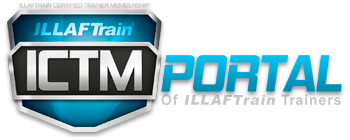Technical Training Specialist
Course id: TTS
Duration: 5 Days
introduction
This program has been prepared for the trainer, expert specialist or the facilitator who develops or offers technical programs. The techniques and the content are suitable for training in the classroom, as well as “job-training” and suitable for training employees and clients.
Prerequisites
NO
Audience
This program was prepared for the trainer, expert specialist or the facilitator who develops or offers technical programs.
Objectives
- Determine who will attend within a specific training category and the necessary materials for this group.
- Assesse the validity of training matters, in addition to the gaps in performance.
- Write the real training objectives that meet three conditions.
- Determine the appropriate training methods.
- Use a method to sequence the training activities for beginners and advanced learners.
- Perform steps that reduce boredom during training.
- Write questions as an efficient test to discover the needs.
- Determine the appropriate evaluation methods.
- Identify the key elements in the formulation of lesson guides and plans, so that others can use them.
- Describe how to use the concepts of adult learning in training.
- Practice the method of designing learning activities for various levels of learners.
- Apply eight techniques to encourage and engage the participants during training.
- Use questions appropriately.
- Build familiarity as a basis for cooperation and difficult learners.
- Apply a framework to complete the analysis of the basic needs.
- Use audio and visual tools effectively to support learning.
Content
Helping Adults Learners
Assessing 10 aspects of your learning style.
Using 18 concepts to enhance adults learning.
How to build retention.
Identifying three learning styles.
Connecting your learning style to adult learners using five steps.
Analyzing the questions through five steps for adult learning.
Completing the questionnaire on trainer style.
Connecting your own training style to adult learners by making it flexible to be more effective.
Training Plan
Reviewing the design phases.
Identifying what the training can accomplish.
Reporting what you need in order to know the mechanism of learning enhancement.
Applying a module that illustrates the efficiency.
Dividing the mission into teachable parts.
Formulating the realistic learning objectives.
Planning objectives within a level consistent with learning.
Organizing, Planning and Developing Materials
Identifying the correct methods to achieve the objectives.
Identifying the efficient technical training techniques to remember and apply them.
An appropriate sequence for the techniques.
Determining the need for training and practice to learn a skill.
Developing the activities and exercises that help remembering.
Advice to practice the skill and case-studies and search for information, interviews and games in addition to playing roles and performing self-assessment.
Applying a comprehensive guide to develop activities and exercises.
Professionalism of the trainer materials.
Creating programmed notes, functional work and checklists.
Using a list of 15 points to develop the flyers.
Determining when three types of learning plans will be developed.
Writing the lessons’ plans for others to use them easily.
Training Techniques to Facilitate Adult Learning
Making the flyers work for you.
Practicing five techniques for efficient communication.
Preparing the overall environment to reduce the learning risks.
Increasing participation during lectures.
Using small groups efficiently.
Discovering how to enhance learning and achieve the target.
Identifying four types of questions to increase interaction.
Efficient primary use and following up on questions to guide learning.
Ask better questions by using the six-step approach.
Reformulating for a better understanding.
Providing effective feedback.
Presenting efficient presentations while practicing the skill.
Applying four strategies for the difficult learner in case-studies.
Using audio and visual support to enhance learning.
Evaluating Training Results
Identifying four levels of evaluation.
Evaluating the learner’s reaction.
Evaluating learning in the classroom.
Identifying if the new skills are being used again in work.
Using benefits to show results.

